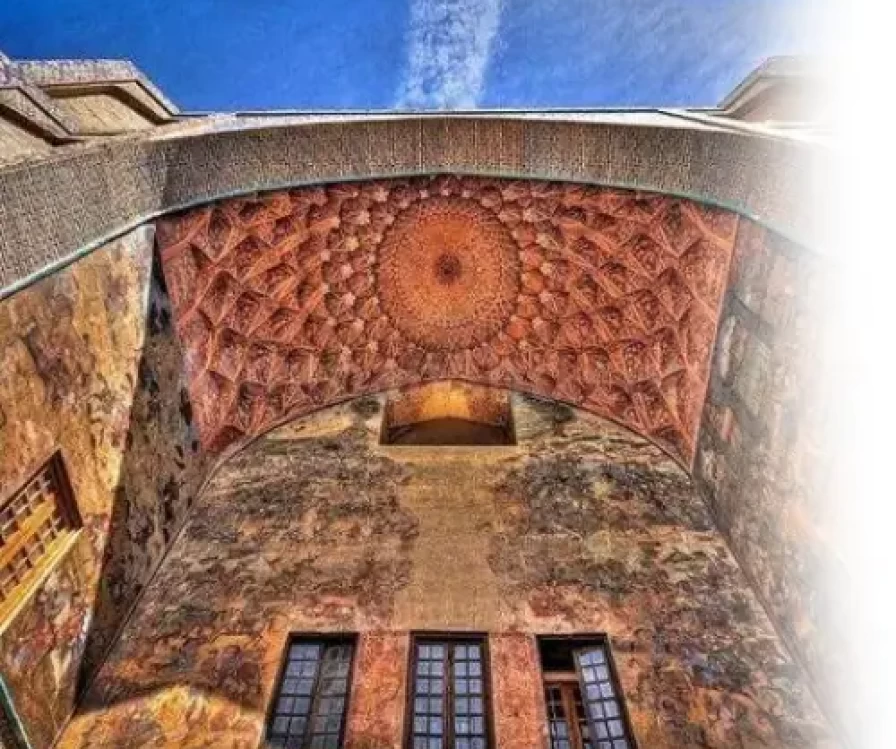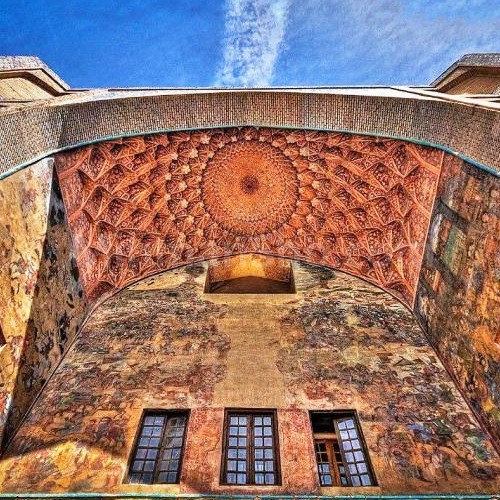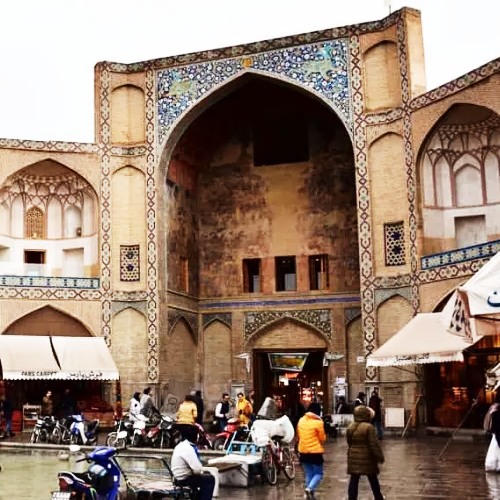
Unveiling the Majesty of Qeysarie Gate: Gateway to Isfahan's Grand Bazaar for Visitors





Qeysarie Gate
Iran, a land brimming with historical treasures and vibrant culture, invites travellers to explore its architectural wonders. The Qeysarie Gate , a magnificent portal marking the main entrance to the Grand Bazaar of Isfahan, stands as a powerful symbol of the city's rich trading history and architectural splendor. Situated at the northern end of the iconic Naqsh-e Jahan Square , this impressive structure, also sometimes referred to in historical contexts related to its potential namesake as " head in caesarea isfahan " (though this connection is debated), offers a captivating glimpse into Isfahan's past and present. As Sanapersian tour and travel service providers, we encourage you to discover the grandeur and significance of the Qeysarie Gate . This guide aims to illuminate the historical context, architectural details, and the experience of encountering the Qeysarie Gate , providing essential information for your potential exploration. Whether you are fascinated by historical markets, drawn to Safavid-era architecture, or seeking to immerse yourself in the bustling atmosphere of Isfahan's Grand Bazaar, understanding the allure of the Qeysarie Gate will undoubtedly enrich your Iranian travel itinerary.
The Qeysarie Gate , or " Qeysarie Gate Isfahan ", is more than just an entrance; it is a historical monument in its own right. Constructed in the early 17th century during the reign of Shah Abbas I of the Safavid dynasty, it served as a grand portal connecting the newly established Naqsh-e Jahan Square to the ancient and extensive Isfahan Grand Bazaar. Its original three stories (though the uppermost was later destroyed) once housed a Naqqarekhane, where ceremonial music was played. The question of " how many head in caesarea isfahan " is intriguing but likely alludes to the gate's decorative motifs rather than literal heads, possibly referencing symbolic figures with human heads and animal bodies, a common artistic theme of the era.
The architecture of the Qeysarie Gate is a fine example of Safavid design. Adorned with intricate tilework, including depictions of archers with lion bodies and dragon tails (a symbolic representation linked to the zodiac sign of Sagittarius and potentially the founding of Isfahan), and delicate paintings attributed to the renowned Safavid painter Reza Abbasi, the gate is a feast for the eyes. While the direct " head in caesarea isfahan today " might not be a literal representation, the artistic depictions on the gate are a testament to the sophisticated artistry of the time. The " qeysarie isfahan " is synonymous with this historical gate and the vibrant bazaar it guards.
The Qeysarie Gate has witnessed centuries of commerce and cultural exchange. It symbolized the power of the Safavid empire and the prosperity of Isfahan's merchants. Foreign dignitaries and traders would have passed through this very gate, entering the heart of Persian trade. The " head in caesarea isfahan meaning ", in its artistic context, likely relates to astrological beliefs and the symbolic representation of power and auspicious beginnings.
Passing through the Qeysarie Gate immerses visitors in the labyrinthine alleys of the Grand Bazaar, a historical market stretching for kilometers, offering a vast array of traditional crafts, carpets, spices, and more. The atmosphere is vibrant, providing a sensory experience of Iranian culture and commerce. The direct search for " Qeysarie gate isfahan " will lead you to the heart of this historical and bustling area. As Sanapersian tour and travel service providers, we believe that experiencing the Qeysarie Gate is an essential part of any visit to Isfahan . Its historical significance and architectural beauty serve as a captivating introduction to the wonders that await within the Grand Bazaar and beyond . We encourage you to take your time to admire its intricate details and imagine the countless people who have passed through this magnificent gateway over the centuries.
Contact Us
+989054577261